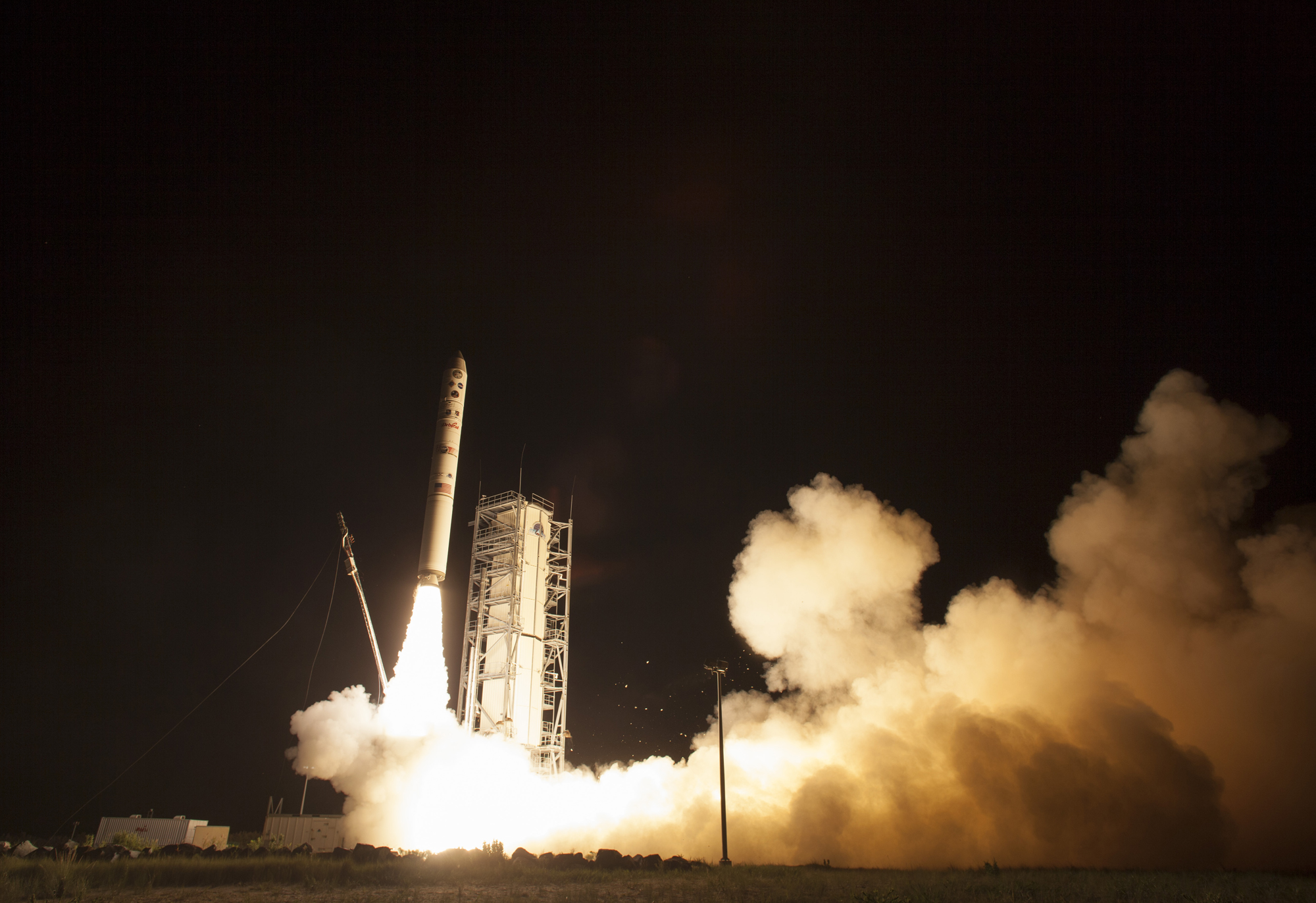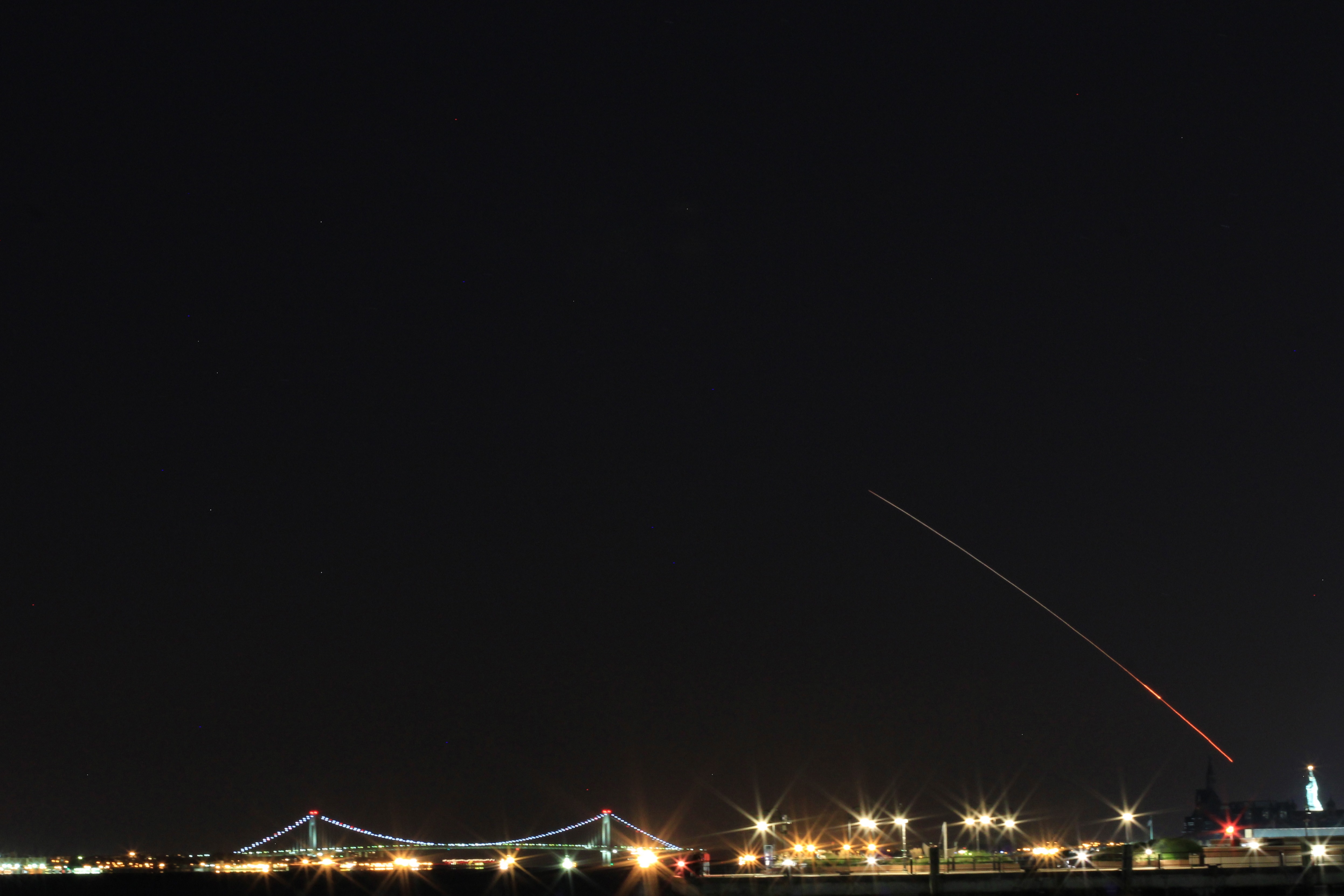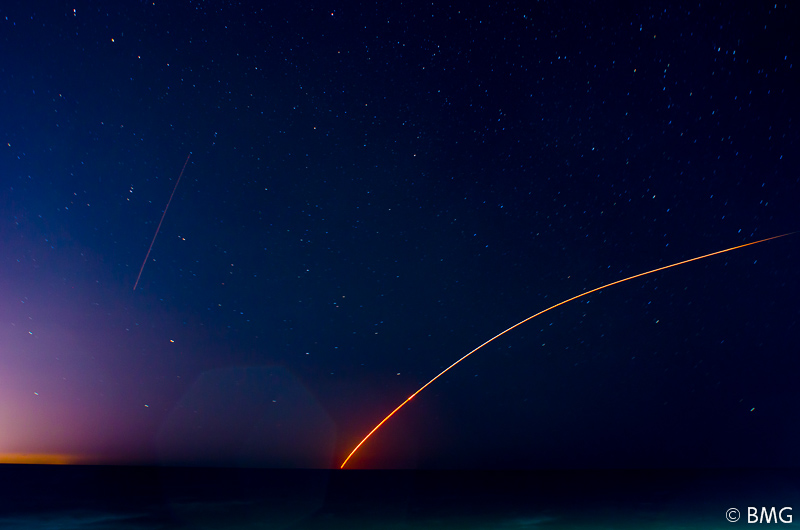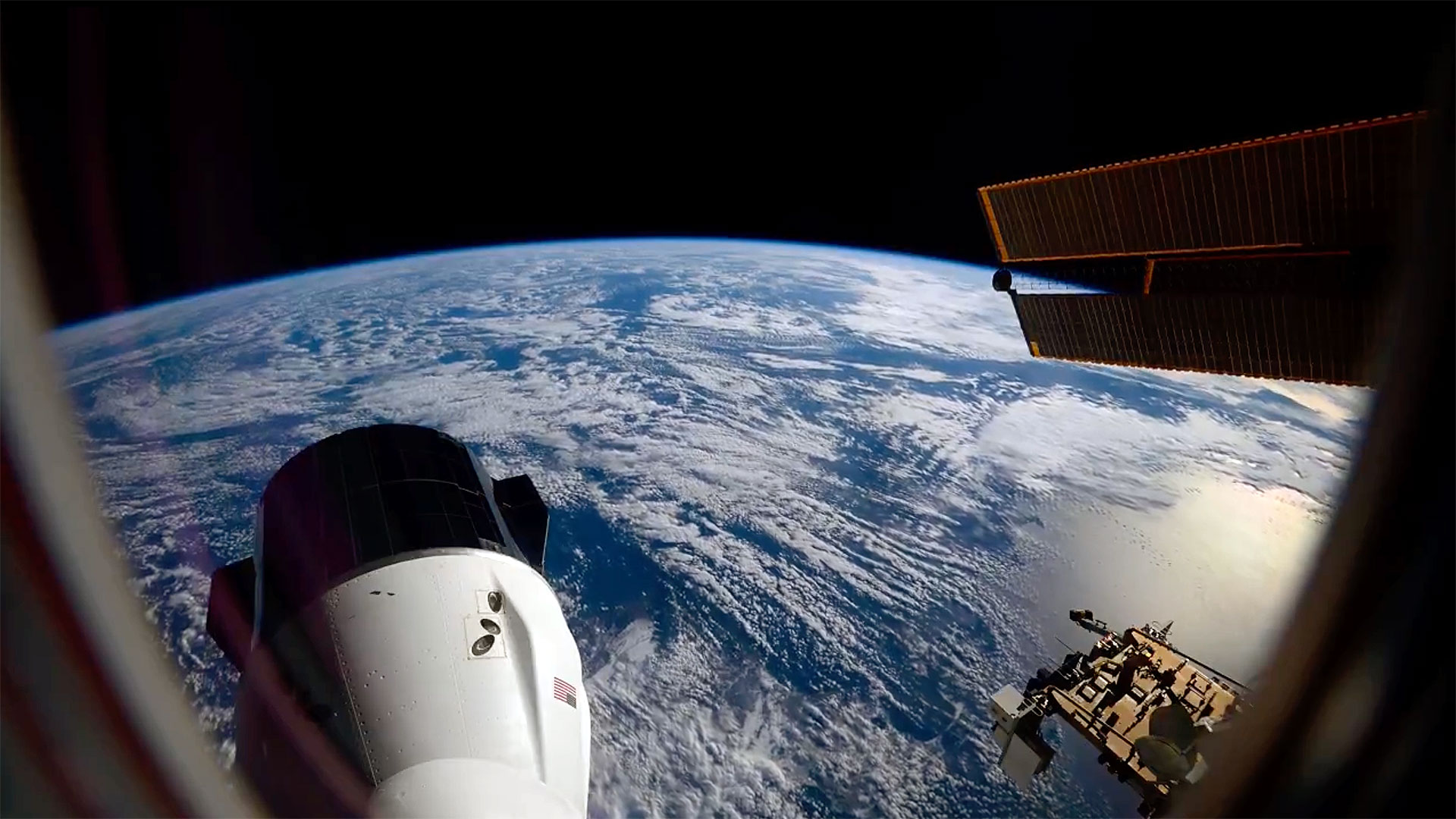Wow! NASA's Late-Night Moon Launch Wows Stargazers (Jaw-Dropping Photos)
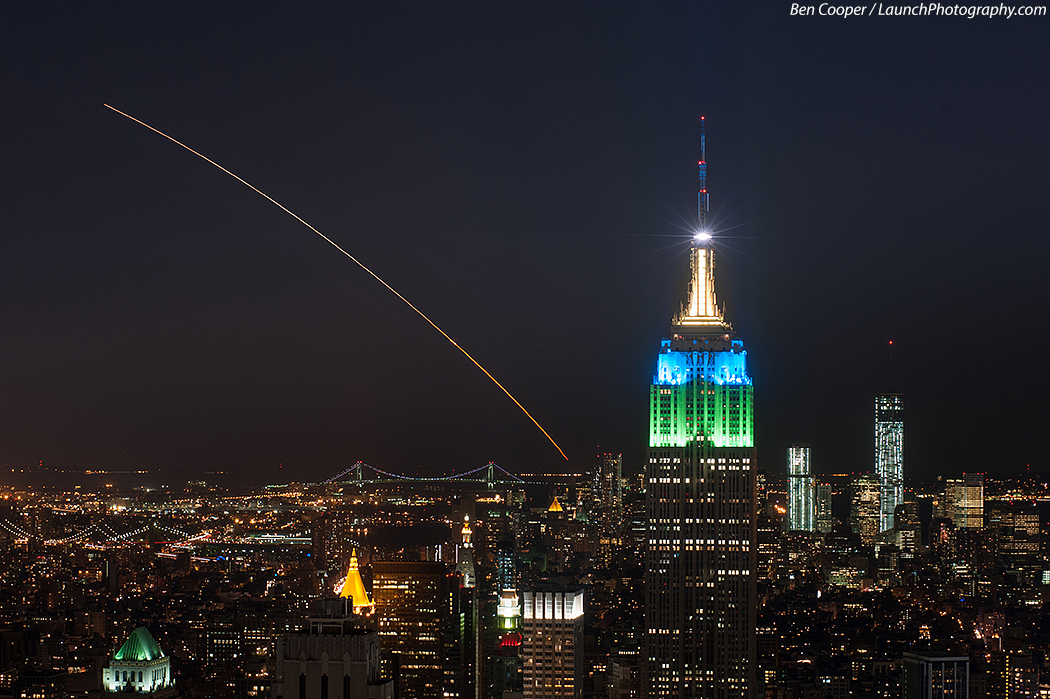
NASA's spectacular nighttime launch of a new moon probe late Friday (Sept. 6) promised to amaze spectators up and down the U.S. East Coast. By all accounts by photographers and SPACE.com readers, it lived up to the hype and then some.
Photos of the dazzling NASA moon probe launch poured into SPACE.com from readers and photographers in New York City, Massachusetts, New Jersey and more. The new robotic LADEE moon probe launched into spaceFriday atop a new Minotaur V rocket at 11:27 p.m. EDT (0327 Sept. 7 GMT) from NASA's Wallops Flight Facility on Wallops Island, Va., creating a brilliant night sky spectacle visible from hundreds of miles away.
Among the most jaw-dropping photos is a stunning shot by veteran launch photographer Ben Cooper, who captured a long-exposure view of the launch from the Top of the Rock observation deck at Rockefeller Center in New York City, far north of the launch site on Virginia's Eastern Shore. [Watch LADEE Soar Toward the Moon (Launch Video)]
"I planned this months in advance and made a trip up to coincide with it (my family is up here) … From the Top of the Rock observation deck, the Minotaur was due to pop above the horizon from just left of the Empire State Building, a trajectory I calculated back in June," Cooper said of the 55-second exposure. "I was amazed from 200 miles away at how bright it was, and how fast, though Minotaur is one of the fastest launch vehicles. The clarity in the atmosphere made it amazing even with light pollution. After covering 110 launches before this, this was my first where I was any further than even 10 miles away."
In Jersey City, N.J., skywatcher Quentin Le Ferve captured amazing launch streak views of LADEE soaring overhead, with bright city lights and bridges serving as a stunning backdrop. From my home in northern New Jersey, 12 miles south of New York City, the LADEE launch looked like a brilliant red-orange streak soaring spaceward. The separation of one of the rocket's five stages and ignition of another, a major milestone in the ascent, was clearly visible.
Meanwhile, photographer Ben Gallop captured a serene time-lapse view of the launch from Jennettes Pier in Nags Head, N.C. You can see more amazing LADEE launch photos by SPACE.com readers here.
NASA's $280 million LADEE moon mission will take an unprecedented look at the moon's thin atmosphere and study how lunar dust moves over time. Scientists hope the mission will offer insight into 40-year-old mysteries of moon dust first observed by NASA Apollo astronauts during the lunar landings in the 1960s and 1970s.
Breaking space news, the latest updates on rocket launches, skywatching events and more!
The public interest in the LADEE mission appears to be high. NASA officials said crowds watched the launch from Times Square in New York City (it was broadcast live on the giant screens), as well as from the steps of the Lincoln Memorial.
"The launch turned the hashtag #NASA into the top trending topic on Twitter in the U.S. late Friday. The launch coverage on NASA TV went out in 66,000 webcast streams," NASA officials wrote in an update. "For the first time that the NASA.gov team is aware of, the majority of peak traffic to the site for a live event came from mobile devices instead of desktop computers."
At the Wallops Flight Facility alone, a crowd of 1,100 spectators packed the visitor's center to watch the moon shot. Across the country, at NASA's Ames Research Center in Moffett Field, Calif., another large crowd watched the launch on screens to cheer the mission on. NASA's Ames center will serve as mission control for the LADEE spacecraft.
In Oneonta, N.Y., stargazers Jessica Guenther and her husband Dan Decker were overjoyed at being able to see LADEE begin its voyage to the moon.
"We have been practicing our night sky photography for the last few weeks and were so excited to be able to capture the launch!" Guenther told SPACE.com in an email. "This is the only launch into space we have ever seen, we were so excited we couldn't even contain ourselves! All we kept saying was 'Wow, I can't believe we got to see a rocket to the moon!'"
NASA's Friday night LADEE moon launch marked the first flight of a Minotaur V rocket built by the commercial spaceflight company Orbital Sciences Corp.
Shortly after the successful launch, the LADEE spacecraft experienced a glitch with its reaction wheels, which are used to orient the probe in space. NASA engineers are studying the issue in order to develop repair plans, agency officials said.
Editor's note: Did you see LADEE and Minotaur V in the night sky? If you took a photo of the LADEE launch or any other night sky view that you'd like to share for a possible story or image gallery, send photos, comments and your name and location to managing editor Tariq Malik at spacephotos@space.com.
Email Tariq Malik at tmalik@space.com or follow him @tariqjmalikand Google+. Follow us @Spacedotcom, Facebookand Google+. Original article on SPACE.com.

Tariq is the award-winning Editor-in-Chief of Space.com and joined the team in 2001. He covers human spaceflight, as well as skywatching and entertainment. He became Space.com's Editor-in-Chief in 2019. Before joining Space.com, Tariq was a staff reporter for The Los Angeles Times covering education and city beats in La Habra, Fullerton and Huntington Beach. He's a recipient of the 2022 Harry Kolcum Award for excellence in space reporting and the 2025 Space Pioneer Award from the National Space Society. He is an Eagle Scout and Space Camp alum with journalism degrees from the USC and NYU. You can find Tariq at Space.com and as the co-host to the This Week In Space podcast on the TWiT network. To see his latest project, you can follow Tariq on Twitter @tariqjmalik.
